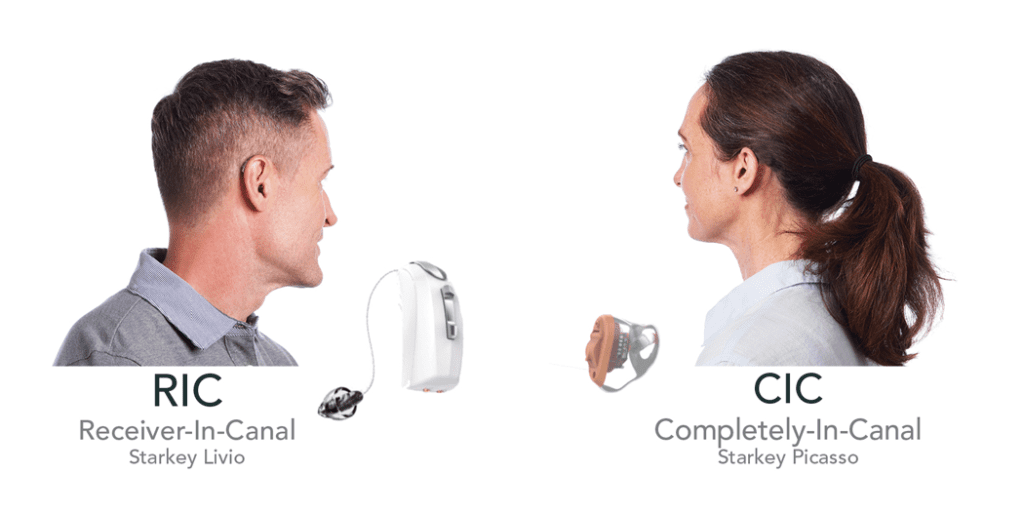First of all, let me say that the most appropriate style (shape and size) of hearing aids for each patient is often affected or determined by the patient’s hearing loss and his/her ability to manage the aids on a daily basis physically.
For example, it would be inappropriate to fit a patient with hearing aids that help them hear better, but they cannot insert and remove or change the batteries. The best style of hearing aids for you or a loved one can only be determined through a consultation with a qualified hearing care provider. However, for those patients who do have the option of choosing between different styles of aids each have advantages and disadvantages.
Although there really is not a truly “invisible” hearing aid – or at least not yet – they have gotten progressively smaller over time. The smallest currently available are referred to as invisible-in-the-canal or IIC. The entire hearing aid goes completely into the ear canal, making it virtually invisible. When IICs are appropriate for a patient, they obviously have the advantage of being very, very discreet. There is nothing wrong with a patient wanting his/her hearing aids to be as discreet as possible. It is no different from choosing frames for your eyeglasses. You choose the frames you like or the ones that you are or most comfortable wearing. IICs hearing aids have two notable disadvantages. First, because all the hearing aids’ components are in the ear canal, they are exposed to more perspiration, ear wax, and other debris normally found in the ear canal. As a result, IICs typically must be cleaned and serviced more frequently than other styles of hearing aids, and these generally do not last as long as other styles. Second, there are technology features available in hearing technology today that are not yet available in IICs simply because the aids are too small to accommodate those features.
These days behind-the-ear (BTE) aids are often what we refer to as Receiver-in-the-canal (RIC) devices. Although we still sometimes use traditional BTEs, RICs are much more common. They are not as discrete as an IIC but are much more discrete than traditional BTEs and much more comfortable to wear. RIC hearing devices sit on the back of the ear with a small wire that goes into the ear canal with the receiver (speaker) at the end of it. Because the size limitation of IICs does not exist with RIC devices, there are many more options available based upon the patient’s needs or desires. RIC devices are available in rechargeable, for example, and many have Bluetooth capability that will allow the hearing aids to connect directly to the patient’s smartphone (depending upon the make and model of the phone), so that phone conversations are much easier.
“Invisible” and behind the ear hearing aids are the two extremes in hearing aid styles.
There are several other styles available and, as I said earlier, several other things to consider in choosing what is best for you or a loved one. If you’d like to schedule a complimentary consultation, feel free to give us a call at 870-268-1488, or if you have other questions that I can answer, please email me at info@hearingaidsjonesboro.com.

